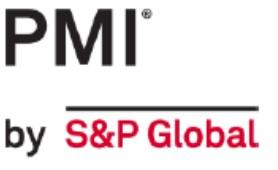The Global Purchasing Managers’ Index (PMI) for manufacturing produced by J P Morgan using the data from S&P Global improved slightly from the December reading but at 49.1 this only means a slower rate of contraction in activity. The rate of contraction in output and new orders both slowed and there was a slight increase in employment. Activity among consumer goods producers increased (i.e. was above 50) for the 2nd month in a row while both investment and intermediate goods sub-sectors had a lower PMI reading than in December.
The trends for the UK were similar with an improvement in the overall PMI reading to 47.0 still leaving it firmly in negative territory. Both output and new orders fell in all three sub-sectors of manufacturing but with the steepest declines in the intermediate goods group, the contractions for investment goods producers were mild in both relative and absolute terms.
While a fall in orders – for the 8th month running – is the main constraint on output, UK manufacturers also reported continuing problems with shortages of raw materials and staff. Suppliers’ delivery times remained lengthened but at the smallest extent for three years – perversely, this reduces the overall PMI reading because this delivery times are taken as a sign of increased activity. Finally for the UK, there are some signs of optimism with over half of respondents expecting output to be higher one-year from now and, as a result, optimism rose to its highest level since April 2022.
The Euro-zone PMI for manufacturing also improved, in this case to 48.8, a 5-month high, while remaining in negative territory; again, although both output and new orders fell, this was at a slower pace than in December. Three of the countries included in this group recorded a PMI above 50 – France (50.5), Italy (50.4) and Ireland (50.1) – and while Germany had a 4-month high reading of 47.3, this was the weakest of the eight Euro-zone countries that have a PMI survey.
The weak point of this round of results is that orders fell at a markedly faster rate than output which suggests little support for a turnaround in the latter over the short-term. It is also worth noting that particularly large falls in orders were seen in Austria and Germany and that export orders were down for the 11th consecutive month.
Elsewhere in the Euro-zone, Czechia, Poland and Sweden also saw a higher PMI reading than in December that was, nonetheless, still below 50. The outlier here is Hungary which has a history of large month-to-month swings; they had an exceptionally high reading in December and despite a significant fall in January, the reading of 55.0 was still strongly positive.
Outside the EU, there is a mix of trends with Switzerland and Turkey moving in opposite directions; the former saw a sharp reduction in its manufacturing PMI which fell below 50 for the first time since July 2020, while Turkey shared in the general trend of an improving PMI, but in their case, this took the reading to 50.1 – their first positive since February 2022.
Asia also saw a mix of trends; the PMI for India fell by 2.4 points but remained strongly positive at 55.4 while there was a much small reduction (-0.3 points) in Taiwan although, in this case, this left them with the lowest January figure at 44.3. There was a modest improvement for the ASEAN region which also remains above 50, with smaller increases in China and South Korea which left these countries in negative territory; there was no change in Japan’s similarly negative reading.
Finally, the Americas generally saw an improvement in PMI readings but with one notable exception. There was a very strong increase in Brazil, but this was not enough to move them back above 50, while the more modest rise for Canada did achieve this milestone giving them their first positive reading since July 2022. The USA had a smaller improvement, but their manufacturing PMI remains firmly in contraction territory. The outlier on this continent is Mexico which saw a significant reduction in their reading which took them back below 50 for the first time since last August.
Across the 27 countries/regions that we cover in this analysis, only 9 had PMI readings above 50, although this is an improvement on December when only 6 were in this position, with the most positive being the 55.4 recorded in India; the weakest manufacturing PMI was in Taiwan (44.3). Compared to December, the largest fall in the PMI was recorded in Switzerland (down by 4.8 points), while the biggest improvement came in Brazil which added 3.3 points.
The individual S&P Global PMI reports are available to download on their web-site at https://www.pmi.spglobal.com/Public/Release/PressReleases but we also have a summary charts report which is available to download below. You should note that the PMI readings for Hungary, Sweden and Switzerland are not compiled by S&P Global but can be found with an appropriate internet search (it also means that they are not part of the global PMI calculation).

